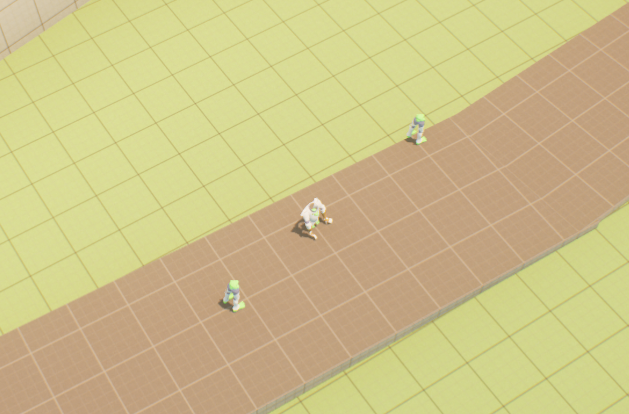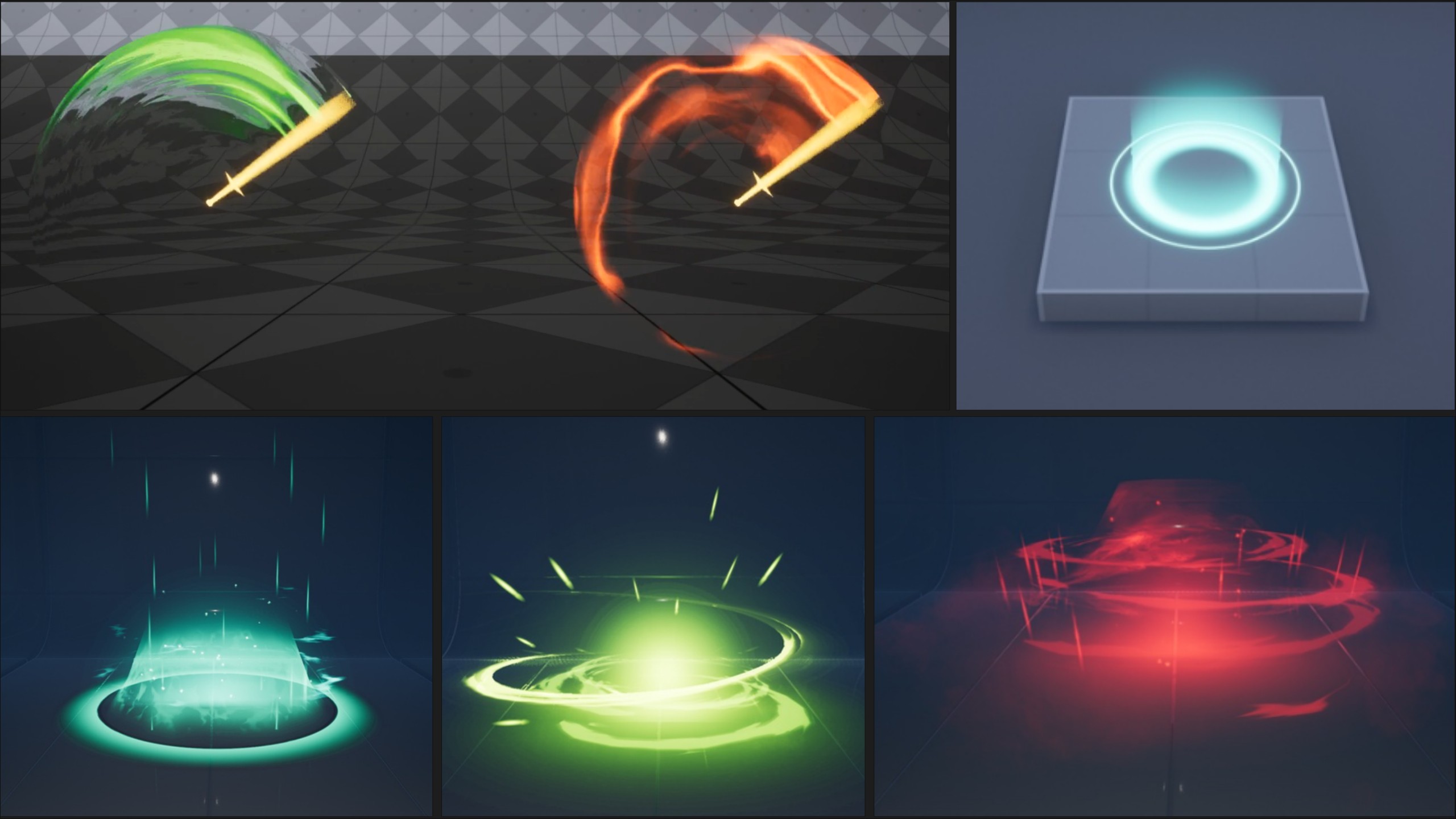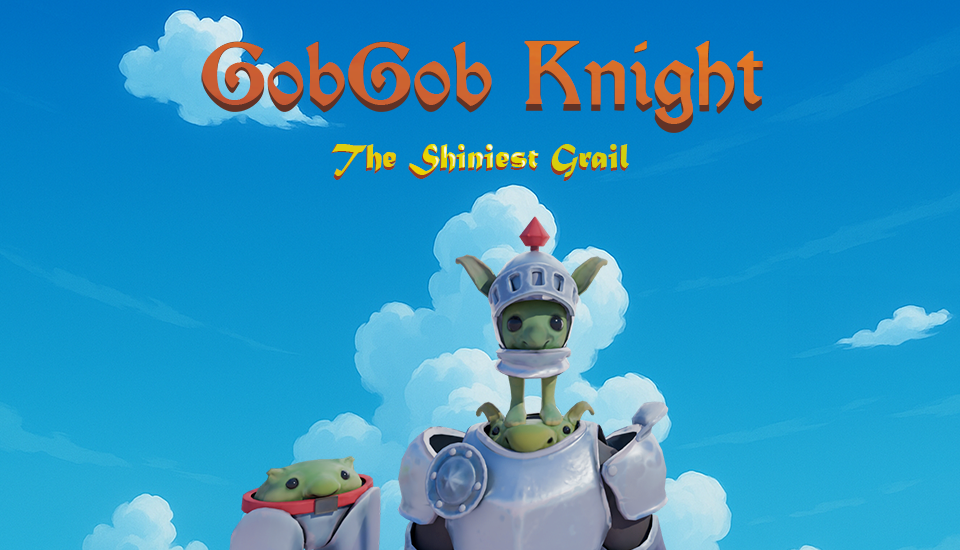Devlog 2: Right on Track
Devlog 2.
Merging the Madness
This week, we focused on combining the prototypes developed over the last two weeks, including multiplayer functionality, level blockout, animations, and the camera logic.
Our programmers spent the majority of their time debugging and ensuring all these elements worked together. This involved gathering all the project files, integrating different prototypes, and resolving compatibility issues. After many long hours of fixing bugs, we finally got everything running in a functional state, allowing us to continue prototyping within the unified project.

With the base systems merged, we focused on refining animations and camera logic. This process also helped us become more comfortable with Unreal Engine's C++ workflows.
Stacking Goblins, The Sequel
A major milestone this week was implementing the combining mechanic, one of the core features of our game. So far, this is only functional for the Legs and Torso, but the system should be easily extendable to include the Head. Our approach was to use a physics constraint on the Legs' hips, allowing the Torso to attach when pressing the B button. However, the challenge wasn’t just combining them—it was ensuring that the Legs could support the Torso's weight without collapsing under it. After extensive tweaking of physics settings, animation adjustments, and refining the physics asset, we managed to achieve a presentable and stable result.
This will be further improved, but we want to add the head first to determine the best settings for moving around the world while combined with three characters.
Writing the Rules Before Breaking Them
In the art department, we’ve been putting more work into refining the art bible so we have a solid direction before committing to detailed assets. Getting everything to feel right now will make things way easier when we start adding proper art, so we don’t end up redoing things later. There’s still a bit left to sort out, but once that’s in place, we can finally start polishing the blocked-out level, which should be really fun and help bring everything to life. Looking forward to that!
Attaching Limbs the Right Way (Mostly)
This week, we spent some time figuring out how to utilize Unreal Engine’s default mannequin for our characters to make things easier. We tried some rigging magic in Blender, then imported it back into Unreal to see how well it worked with our custom characters. So far, it's looking promising—though the weight painting still needs some tweaking (because of course it does).
We also kept working on the character models, improving topology and refining shapes to get a better feel for where we’re heading. Slowly but surely, they’re starting to come together. No broken goblin limbs (for now).
VFX: Just Enough Sparkle
We’ve also been exploring VFX to nail down the style we’re aiming for. We’re going for a stylized but clean look that fits the environment and setting without going overboard. Since it’s a fantasy game, we still want effects to stand out, but we’re avoiding anything too flashy or overly magical—no giant explosions or wild sparkles everywhere. The focus is on the goblins who want to be knights, not wizards, so the effects should complement that rather than steal the show. 
With that in mind, VFX will mostly serve as visual cues to improve readability, add some extra "oomph" to gameplay, and reinforce the game’s style. The goal is to keep things snappy and responsive without being distracting.
Oh Right, We Need to Explain Everything
Another major task this week was getting a proper game design document together. Up until now, we’ve been bouncing around ideas about mechanics, abilities, enemy behaviors, and level design, but actually translating rough ideas into fully detailed mechanics turned out to be a much bigger puzzle than expected.
Once we started writing things down, it became clear just how many unanswered questions there were—mechanics that needed fully defined functions, edge cases we hadn’t considered, and core gameplay interactions that had to be locked down before we could continue development properly. It was a mix of filling in gaps, finalizing key ideas, and making sure everything made sense in the bigger picture.
So yeah, this document now covers every major component of the game in deep detail, and while it was a bit of a headache at times, having everything laid out is going to make the next steps much smoother.
Goblin Noises & Audio Wizardry
As for sound, most of the effort this week went into finalizing the sound bible, and it’s now nearing completion. We’ve also started working on implementing music and ambiance in Unreal, which is going to do great work in tying everything together.
Let's go!
Really looking forward to wrapping up pre-production and finally getting into the actual production phase—that’s when things will really start coming to life!
Files
Get GobGob Knight
GobGob Knight
Three goblins set out on a righteous quest to find the holy grail in the name of... shiny.
| Status | Released |
| Authors | lazage, BudgetArms, Hassan125, mbilmis, MagTellmann, DanickB |
| Genre | Adventure |
| Tags | 3D, Beat 'em up, Co-op, No AI |
More posts
- The Final KnightMay 25, 2025
- Devlog 10 - Spit, Polish, PanicMay 19, 2025
- Devlog 9: Ferns, Forts, and Financially Irresponsible BanditsMay 12, 2025
- Devlog 8 - Another challenger approachesMay 06, 2025
- Devlog 7 - begin of second sprintApr 28, 2025
- Devlog 6 - End of the first sprintApr 21, 2025
- Devlog 5 – AI Uprising BeginsMar 24, 2025
- Devlog 4: Byte-Sized BeginningsMar 17, 2025
- Devlog 3; the Prototype SprintMar 10, 2025

Leave a comment
Log in with itch.io to leave a comment.